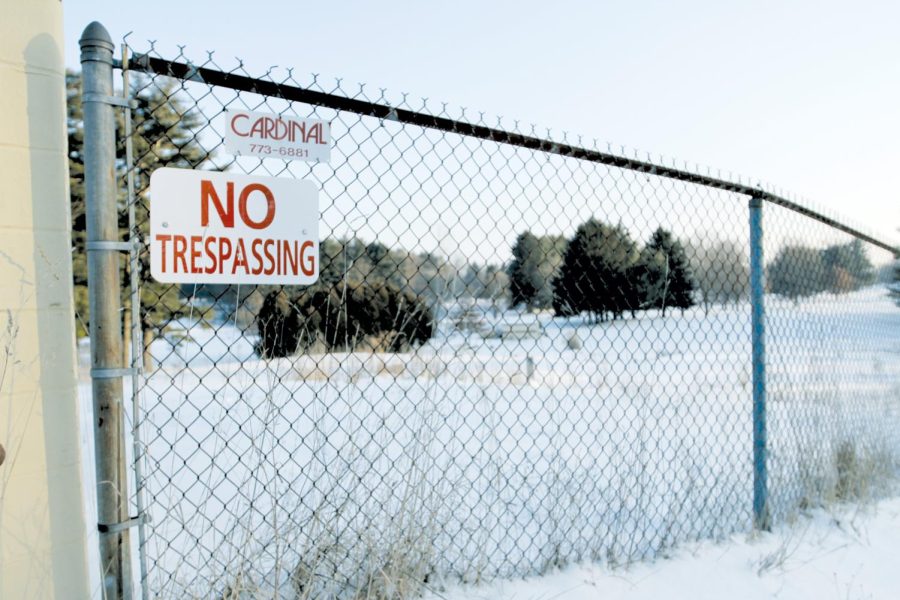Kent State University Golf Course fate lies in Master Plan
January 17, 2018
The Kent State University Golf Course, closed since late 2016, remains vacant since that time. Soon, Kent State may consider selling the land it once occupied.
The course, which now sits along Kent Ravenna Road, was abandoned due to monetary issues and declining revenue. Currently, the only future plans for the area rest in its inclusion within the Kent Campus Master Plan, an attempt to identify future goals for the university.
The Master Plan, according to its webpage, is a “comprehensive facilities master planning process to identify a vision for the Kent Campus.” It includes proposals for new buildings, the removal of other structures, buying and selling land and more.
“The campus master plan was initiated in late 2016, and really got started in early 2017,” said Michael Bruder, the executive director of facilities planning and operations. “And the overall idea of a campus master plan is to design what we would call a physical response to the campus planning to take into consideration the next 10 to 20 years of the campus, including enrollment growth, facility conditions …. academic needs, student life needs like housing and dining, and then research goals of the institution as well.”
Bruder also explained that the plan is meant to cover “every aspect of the university” — including the land that once housed the golf course.
“Currently the campus is undergoing a facilities master plan study, and the completion of that, I believe is later this spring — at least that was the original timeline,” director of athletics, Joel Nielsen, said. “But I know that it’s not complete to date, and I do know that that group along with the campus administration was including the golf course property to look for future options, future uses for that property.”
According to Bruder, the golf course would potentially be available as a resource for Kent State if the land was needed — but no such need has yet been found.
“There really has not been an identified good need for all that property up there, so the Master Plan will likely recommend that the university sell that property and use those funds to help support our core mission on campus,” Bruder said.
The Master Plan, however, still needs to be adopted by the Board of Trustees, a requirement that will likely take place during the March board meeting, Bruder said. After this, the recommendation to sell the property would become official.
“Where we are right now is the master plan is in the final stages of being compiled and drafted, and that draft master plan ultimately will go to the Board of Trustees for their review, comments and or acceptance as it is submitted,” said Thomas Euclide, the associate vice president of facilities planning and operations. “And part of that master plan indicates that the existing golf course, we expect that master plan to say the existing golf course is considered surplus and could be used for a variety of uses, either for university uses or to sell to monetize the property.”
The sale would not, however, leave the Kent State golf teams without a home.
“It’s important to note that the golf training center and some surrounding property, we’re viewing as a separate component from the entire 18 hole golf course,” Bruder said. “So there is no intent to sell the training center, and there is some driving range and some practice holes that will be maintained as part of that for our men’s and women’s golf teams.”
As it is currently, The Ferrara and Page Golf Training and Learning Facility, which features a 10,000 square foot putting surface, among other amenities, would remain open for university use.
“The golf course itself was not their home course that they played for NCAA competitions on,” Bruder said. “… We’re not talking about selling every acre of it, just the parts that we don’t really utilize for the NCAA men’s and women’s golf teams.”
If the property is sold, the university would need to determine how it would proceed with the sale.
“There’s a lot of decisions that go into selling a property,” Euclide said. “From the state, it requires a lot of hoops to be jumped through in order to sell it, and so it might be an outright sale, it might be decided to do a land lease, and have someone build on it but just pay rent for it.”
As when the course was shut down, however, the choice will likely come down to what is most financially viable for Kent State.
“I would expect that the university would want to use it in a way that provides us the best economic value,” Euclide said. “So if it means selling it because we’re going to get the most economic value, then that’s likely what we would do, but we don’t have any identified use for it, so there’s not a need for it for a particular academic program or use at this point, so it’s likely to be sold or leased.”
Cameron Gorman is an assigning editor. Contact her at [email protected].












